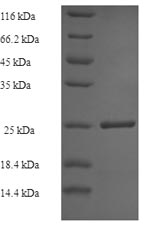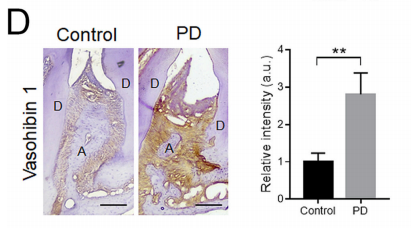The region for expressing recombinant Human VASH1 contains amino acids 1-204. The theoretical molecular weight of the VASH1 protein is 27.3 kDa. This VASH1 protein is produced using e.coli expression system. Fusion of the N-terminal 6xHis tag into the VASH1 encoding gene fragment was conducted, allowing for easier detection and purification of the VASH1 protein in subsequent stages.
Human tubulinyl-Tyr carboxypeptidase 1 (VASH1) is a protein involved in angiogenesis and microtubule dynamics. VASH1 mainly functions to regulate microtubule assembly and disassembly, impacting cellular processes like cell migration and division. Investigating VASH1 provides insights into microtubule regulation, angiogenesis, and cellular processes, offering potential applications in cancer therapy, vascular disorders, and neurobiology. In vascular biology, VASH1 influences angiogenesis by modulating endothelial cell behavior. In cancer research, VASH1's role in angiogenesis makes it relevant for tumor growth and metastasis studies, with potential applications in anti-angiogenic therapies. Additionally, VASH1 is implicated in neuronal development.







